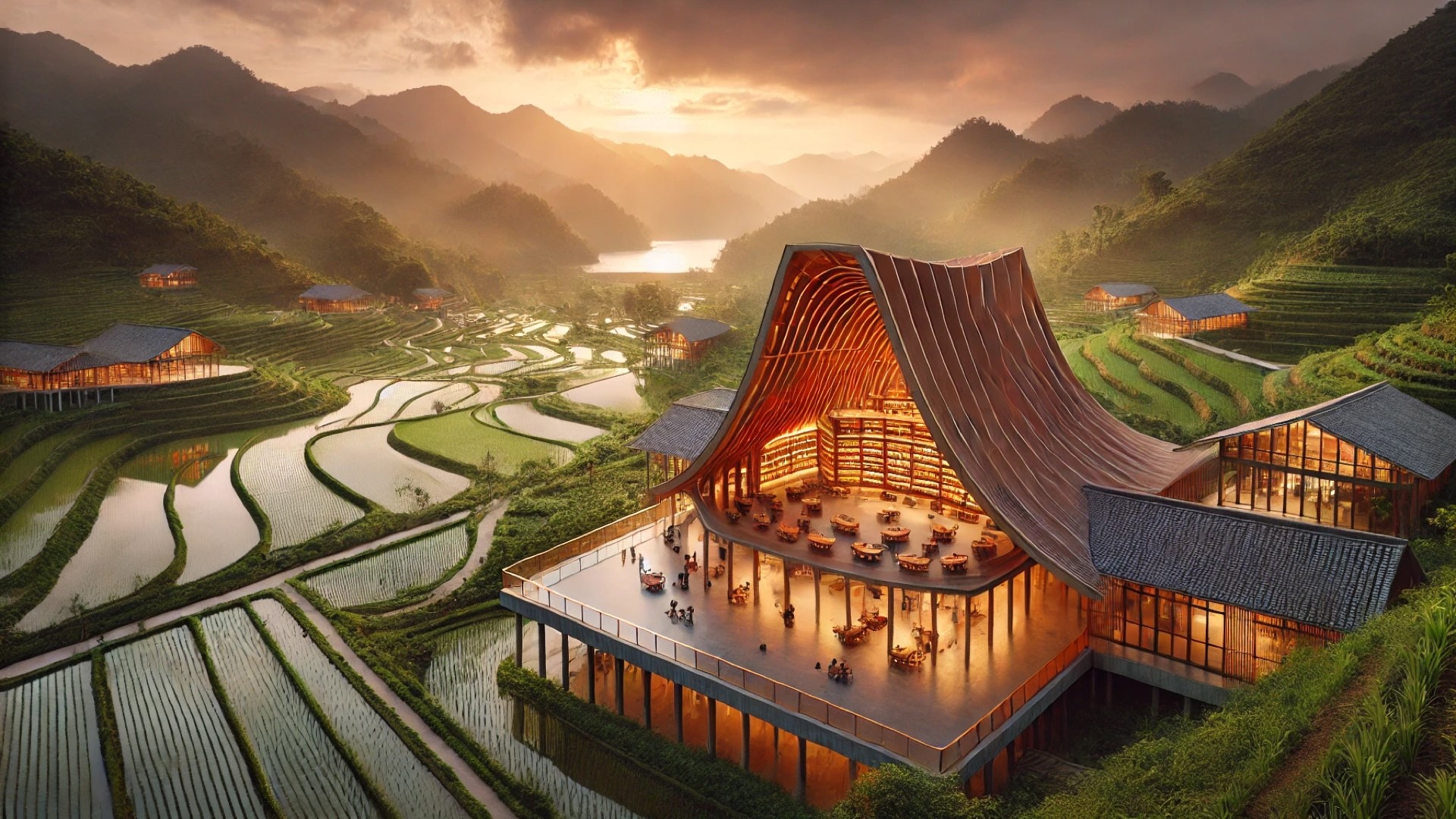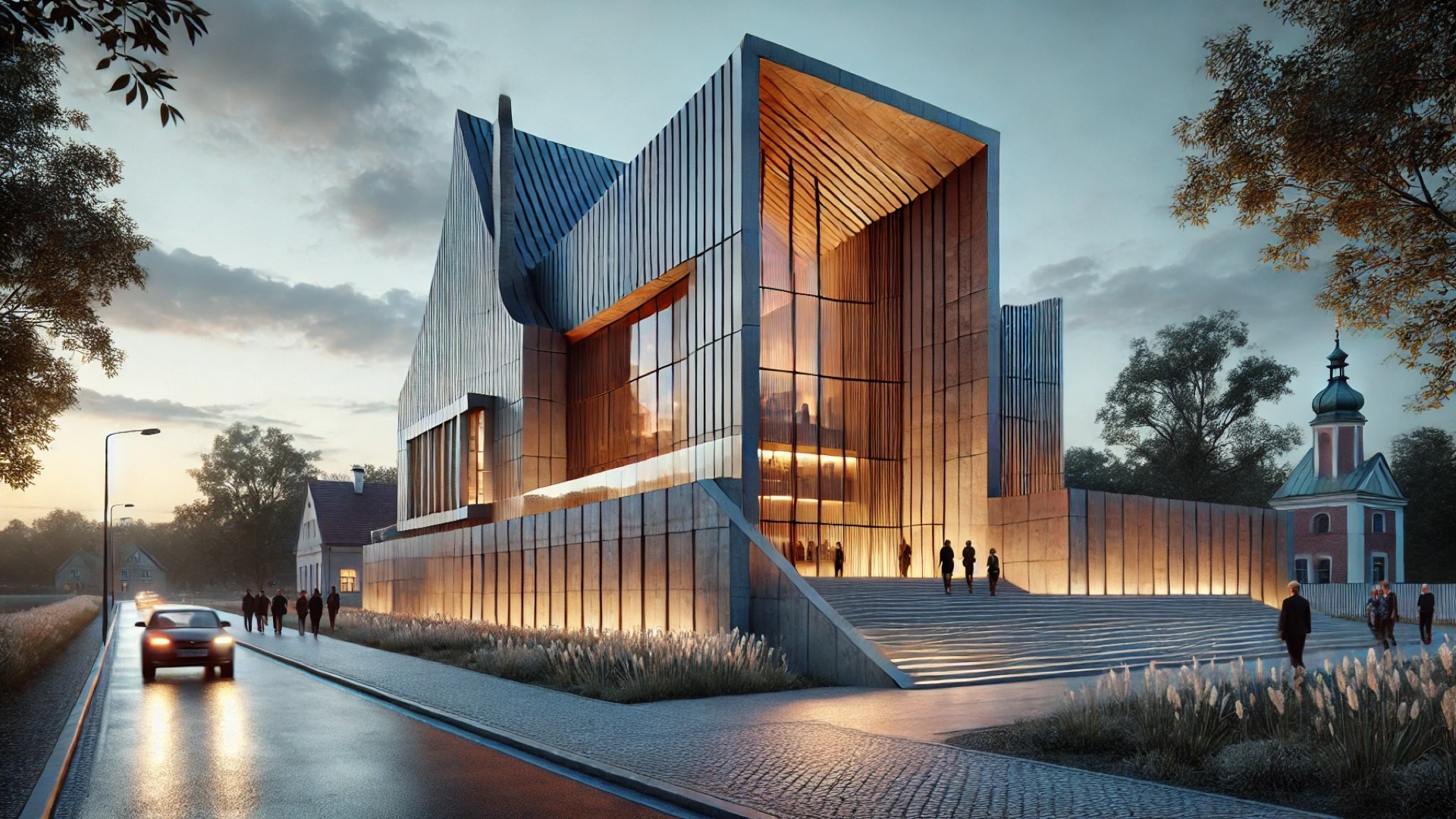
Transforming Tradition: The Grybova Hata Experience
In the picturesque landscape of the Ukrainian Carpathians, the newly opened restaurant Grybova Hata, or Mushroom House, serves not only mouthwatering dishes but also a feast for the eyes. Designed by the innovative YOD Group, this unique dining space draws from the rich cultural tapestry of Ukrainian hospitality, intertwining culinary tradition with sustainable design.
Nature-Inspired Design: A Nod to the Local
The design of Grybova Hata seamlessly integrates two core materials: locally sourced travertine and textured plaster. The chosen materials embody a commitment to environmental sustainability while honoring the region’s natural beauty. But beyond just aesthetics, the project channels a deeper connection to its surroundings, much like mushrooms thrive naturally within their environment.
The Role of Recycled and Bio-Based Materials in Modern Design
At the heart of Grybova Hata’s design ethos is an impressive selection of recycled and bio-based materials, which serve to reinforce not only the restaurant's aesthetic appeal but its sustainability credentials. The culinary ambiance is enriched by custom lighting fixtures crafted from recycled plastic, incorporating handwashing stations for the utmost convenience. Local craftsmanship shines through as much of the furniture is produced within Ukraine, supporting both quality and local artisans.
A Unique Touch: The Mushroom-Based Biotextile Curtains
One of the standout features of Grybova Hata is its striking curtains made from mushroom-based biotextile, designed by artist Dasha Tsapenko. Over the course of three weeks, coconut and hemp fibers were inoculated with mushroom spores to develop curtains that are as functional as they are visually captivating. This unique process results in organic textures that vary from piece to piece, each reflecting the quirky beauty of nature itself—a perfect metaphor for the restaurant’s spirit.
Celebrating Regional Culinary Heritage
The interior layout of Grybova Hata pays homage to the local culinary landscape. Guests are invited to enjoy dishes organized around thematic islands: cheese, meat, and spirits—each telling a part of the region’s gastronomic story. This thoughtful configuration fosters a sense of community, embodying the essence of Ukrainian dining experiences.
Volodymyr Nepyyvoda, one of the architects behind the design, eloquently describes the concept: 'This architecture organically grew within the existing restaurant space, just as fungi emerge from their mycelium.' The result is a dining space that celebrates both locality and organic development, redefining how traditional materials and cultural heritage can converge in modern design.
Conclusion: A New Standard in Sustainable Luxury
Grybova Hata stands as a beacon of sustainable luxury in architecture, inviting us to reflect on the potential of natural materials and eco-conscious design. As we continue to explore how artistry and sustainability can exist in harmony, the innovative spirit of spaces like Grybova Hata reminds us of the beauty that emerges when tradition meets modern creativity. If you’re eager to experience this harmonious blend for yourself, consider a visit to this remarkable restaurant, where each meal is as rich in story as it is in flavor.
 Add Row
Add Row  Add
Add 




Write A Comment